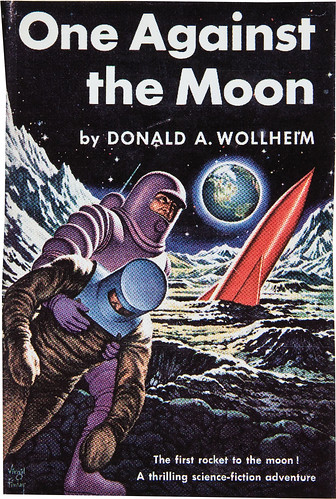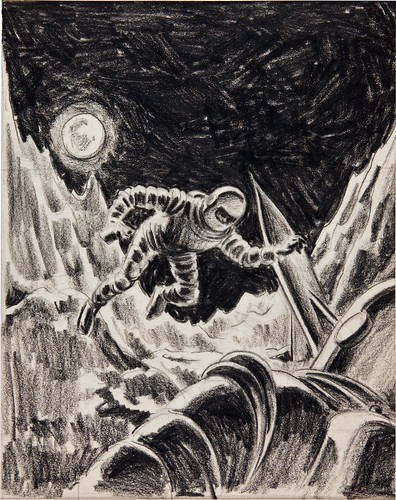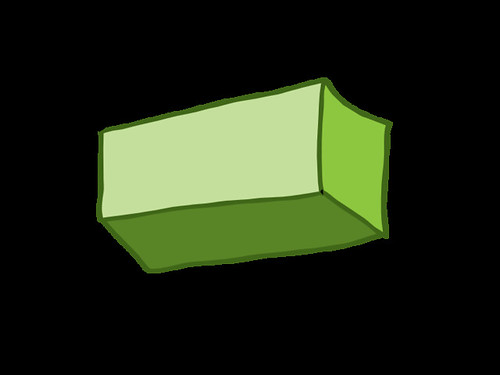Friday, July 29, 2011
Thursday, July 28, 2011
Virgil Finlay: 'One Against the Moon' Pencil Preliminary Cover Study Original Art circa 1956 10:38 PM
Wednesday, July 27, 2011
despair and excessive misery 12:42 PM
Taking too many hits. It's taking it's toll on me. I'm hurting too bad right now to do anything.
Wondering why. You know? Why's it always happen at the worst possible time? Why am I getting kicked low?
Hurts. Bad.
Wondering why. You know? Why's it always happen at the worst possible time? Why am I getting kicked low?
Hurts. Bad.
Tuesday, July 26, 2011
Monday, July 25, 2011
Friday, July 22, 2011
lipsync principles 1:47 PM
Miscellaneous Tips & Tricks & Principles...
1) Don't go from wide open to closed in one frame and vice versa. Definitely don't go from open to closed to open in 3 frames.
2) Don't hold a mouth shape static. An "Ah" shape should shift into a slightly different "Ah" as it's being held.
3) Keep M's and F's for 2 frames. If it's tight, steal from the previous sound.
4) Keep and eye on your targets and make sure they're not too linear in going from one sound shape to the next.
5) Hit the sound shape at least 2 frames before the sound is heard. Even if you're right on the nose, it will feel late when played at full speed. Humans see things faster than they hear them, so we pick up our cues from the shape before the sound.
6) Break up the mouth angles. Shift the mouth up and down, tilt it left or right, get some snarls in there. Show emotion as the character speaks. We can speak and smile, speak and frown, speak and yawn at the same time. Built rigs that allow you to keep that kind of life in your lipsync animation.
7) Upper teeth do not move. They're nailed to your skull.
8) Jaws rotate, not slide, in chaarcters with clearly defined head/neck areas.
9) When building your sound shapes and facial controls, don't forget the cheeks and the nose! The cheeks move when we speak, as does our nose. The cheeks and nose are the great connectors in facial animation, crossing the bridge from mouth animation to eye and brow animation. By keeping your nose and cheeks in the action you tie together the entire face of the character, creating a far more believable character who can act.
10) Don't be afraid to go extreme. Avoid the Princess Fiona Final Fantasy Syndrome(tm). Keep the energy of the sound track in mind when you're doing the mouth shapes. Louder sounds with more energy should be shown with the mouth open wider, sound shapes more extreme. Watch TV announcers talk. Those faces are movin' baby!
lipsync principles
Thursday, July 21, 2011
Tuesday, July 19, 2011
Designing and Using Brushes in Inkscape 12:57 PM
Designing and Using Brushes in Inkscape: "With version 0.46, Inkscape released a new feature called “pattern along path”, which amounts to what you would call brushes in Adobe Illustrator. Although there are a few big differences in using brushes in Inkscape, it’s relatively easy to get the hang. I’ll walk you though how make and use brushes for your drawings."
Monday, July 18, 2011
Saul Bass’ movie posters: then and now 9:36 AM
Saul Bass’ movie posters: then and now: "Director Otto Preminger persuaded studios to use Bass’ work, which was considered unconventional and differed from the norm. Hitchcock followed later and from 1955 to 1965 Bass created some of the most iconic and historically significant designs for films like The man with the golden arm (1955), Vertigo (1958) and Anatomy of a murder (1959). Today, fifteen years after his death, his work still remains relevant and keeps inspiring designers."
The Movie Title Stills Collection
The Movie Title Stills Collection
How to Create a Cubist Masterpiece in Illustrator | Vectortuts 8:24 AM
How to Create a Cubist Masterpiece in Illustrator | Vectortuts: "To add a randomness, select all the rectangles and go to Object > Transform > Transform Each. Check the Preview and Random boxes, change the settings to your liking. There is no exact numbers – I’ve changed both horizontal and vertical scale to 120%, and entered 30 for the angle. Play with sliders until you like the result and the rectangles look random enough, apply the transformation. Open the Artistic brush library and apply the Charcoal-Feather brush to the rectangles (Window > Brush Libraries > Artistic > Chalk, Charcoal, Pencil), or try any other natural-looking brush."
Perspective, Viewpoint and Cubism 8:24 AM
Perspective, Viewpoint and Cubism: "The difference between a perspective and a Cubist representation of reality can be compared to the way two people might describe the same scene to us on the telephone. Using the perspective method, the first person takes up a fixed position in front of a scene and without moving, states the shape, size, colour and position of each object in a few firm and decisive sentences. We don't receive any conflicting information and the description maintains a consistent tone. But when we ask for a description of the back or the underside of an object, our caller finds it impossible because from where they are standing these views cannot be seen. As far as they're concerned, these other views might as well not exist."
The Art Story: Cubism Movement 8:23 AM
The Art Story: Cubism Movement: "Cubism was one of the first truly modern movements to emerge in art. It evolved during a period of heroic and rapid innovation between Pablo Picasso and Georges Braque. The movement has been described as having two stages: 'Analytic' Cubism, in which forms seem to be 'analyzed' and fragmented; and 'Synthetic' Cubism, in which newspaper and other foreign materials such as chair caning and wood veneer, are collaged to the surface of the canvas as 'synthetic' signs for depicted objects. The style was significantly developed by Fernand L�ger and Juan Gris, but it attracted a host of adherents, both in Paris and abroad, and it would go on to influence the Abstract Expressionists, particularly Willem de Kooning."
Tuesday, July 12, 2011
Making a Magazine in Two Days is a Longshot, But We're Gonna Try 4:08 PM
Making a Magazine in Two Days is a Longshot, But We're Gonna Try: "We'll be taking submissions throughout the weekend from writers, artists, photographers, programmers, videographers—and we're even going to pay you for your contribution."
Saturday, July 09, 2011
Thursday, July 07, 2011
not particularly 8:40 AM
meh.
How about a Medicine VS Candy story?
The pill pals vs the thrown candy? I need to develop the candy some. Who are they? How many of them are there? How do they relate to each other? And the Halloween Pumpkin?
Off to the sketchbook!
How about a Medicine VS Candy story?
The pill pals vs the thrown candy? I need to develop the candy some. Who are they? How many of them are there? How do they relate to each other? And the Halloween Pumpkin?
Off to the sketchbook!
Monday, July 04, 2011
Dolores Fuller 11:22 AM
Although campy and tacky, the films were far better, and more popular, then any of Ed Wood’s films and Dolores boldly asked Hal for a part in Blue Hawaii. Hal liked Dolores, but now in her late thirties, she was a bit too old to be one of the girls that appeared in the films. Instead, Hal Wallis gave Dolores a much different, and in the end, far more prophitable opportunity. Introducing her to composer Ben Weisman, Delores and Weisman became a successful song writing team, churning out dozens of songs for Elvis, including Rock-a-Hula Baby from Blue Hawaii, I Got Lucky from Kid Galahad, Barefoot Ballad from Kissin’ Cousins, Big Love, Big Heartache from Roustabout, Do the Clam from Girl Happy, Have a Happy from Change of Habit and the title track from Spinout. Eventually other recording artists began to sing Delores and Weisman’s songs, including Ricky Nelson with Cindy, Cindy, Nat King Cole with Someone to Tell it To and Peggy Lee with Losers Weepers.
-Pop Culture Addict























